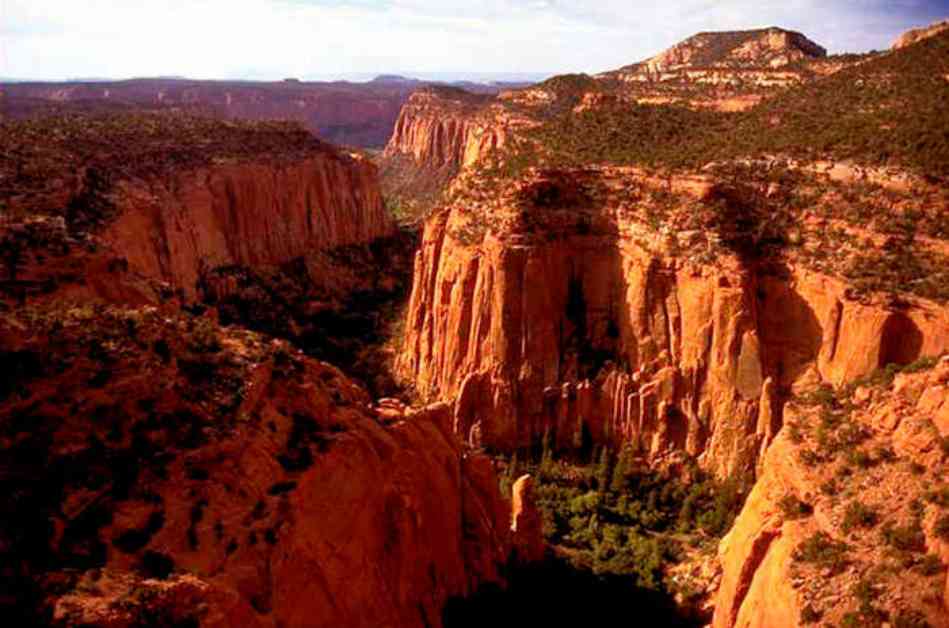In a recent announcement from the Interior Department, a review of national monument boundaries is set to take place, sparking concerns from conservation groups and environmental advocates alike. This move, initiated by Interior Secretary Doug Burgum, is part of the Trump administration’s efforts to expand U.S. energy production and is stirring up controversy over the fate of protected lands established under previous administrations.
The focal points of this review are the Bears Ears and Grand Staircase-Escalante National Monuments in Utah, which have been the subject of ongoing debate due to their rich coal and uranium reserves. These iconic sites, encompassing over 3.2 million acres, symbolize a clash between economic interests and environmental conservation efforts.
During his tenure, President Trump notably reduced the size of these monuments, citing concerns about overreach and restrictions on resource extraction. However, President Biden later reinstated protections for these areas, emphasizing the importance of preserving natural landscapes and cultural heritage.
The legal implications of altering national monument boundaries remain murky, with ongoing legal battles questioning the authority of the president to make such changes. A coalition of national monument advocates has condemned this move, calling it an unpatriotic attack on public lands that are cherished by millions of Americans.
National monuments play a crucial role in safeguarding biodiversity, preserving historical sites, and supporting outdoor recreation activities. They serve as a testament to the unique natural beauty and cultural significance of the United States, drawing in visitors from around the world.
Conservation Concerns and Economic Interests Clash
The potential redrawing of national monument boundaries has sparked a heated debate between conservationists and proponents of energy expansion. On one side, environmental advocates argue that these protected areas are essential for maintaining ecosystem health, protecting wildlife habitats, and preserving fragile landscapes. They stress the importance of balancing economic development with environmental stewardship to ensure a sustainable future for generations to come.
Conversely, supporters of energy expansion view these monuments as untapped resources that could drive economic growth and create job opportunities in local communities. They argue that unlocking the full potential of these lands is critical for achieving energy independence and reducing reliance on foreign sources.
Amidst these conflicting viewpoints, the fate of national monuments hangs in the balance, with decisions that could have far-reaching implications for the environment, economy, and cultural heritage of the United States.
Legal Battles and Community Opposition
The legal landscape surrounding national monuments is complex, with questions about presidential authority, statutory rights, and public interest at the forefront of the debate. While the Antiquities Act grants presidents the power to designate monuments, the process of altering or revoking these designations is a contentious issue that has yet to be fully resolved.
Local communities and tribal groups have voiced their opposition to any changes in monument boundaries, citing the importance of these lands for their cultural identity, historical significance, and spiritual connection to the natural world. They argue that preserving these sites is essential for honoring past generations, protecting sacred sites, and upholding their cultural heritage.
As the review of national monument boundaries moves forward, the clash between conservation concerns and economic interests is likely to intensify, raising critical questions about the future of public lands, environmental policy, and the legacy we leave for future generations. The outcome of this debate will shape the landscape of conservation efforts, energy development, and public land management in the years to come.
The rewritten article captures the essence of the original content while infusing it with a more engaging, informative, and reader-friendly tone. It provides a comprehensive overview of the ongoing debate surrounding national monument boundaries, highlighting the key issues, stakeholders, and implications of this contentious issue.















